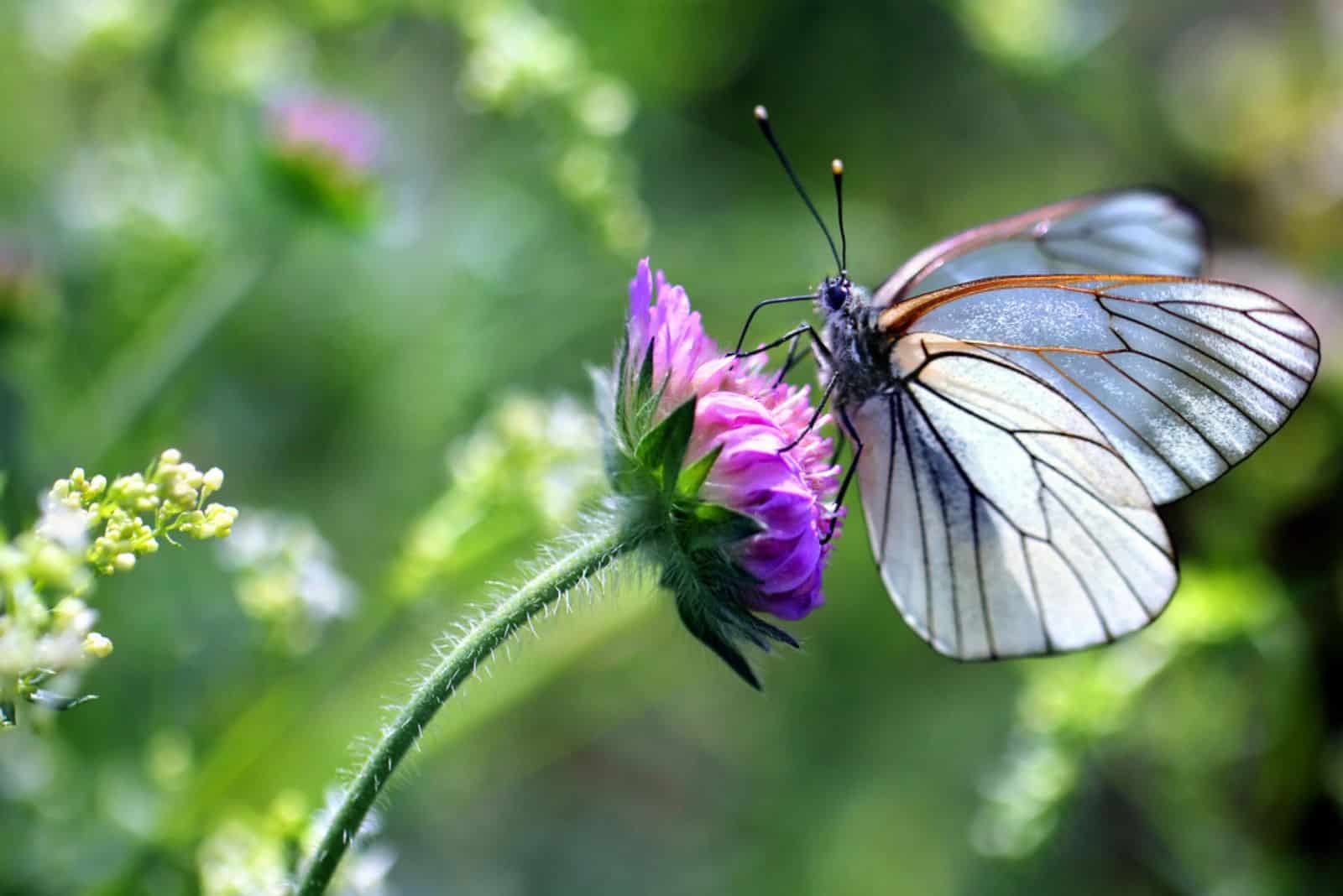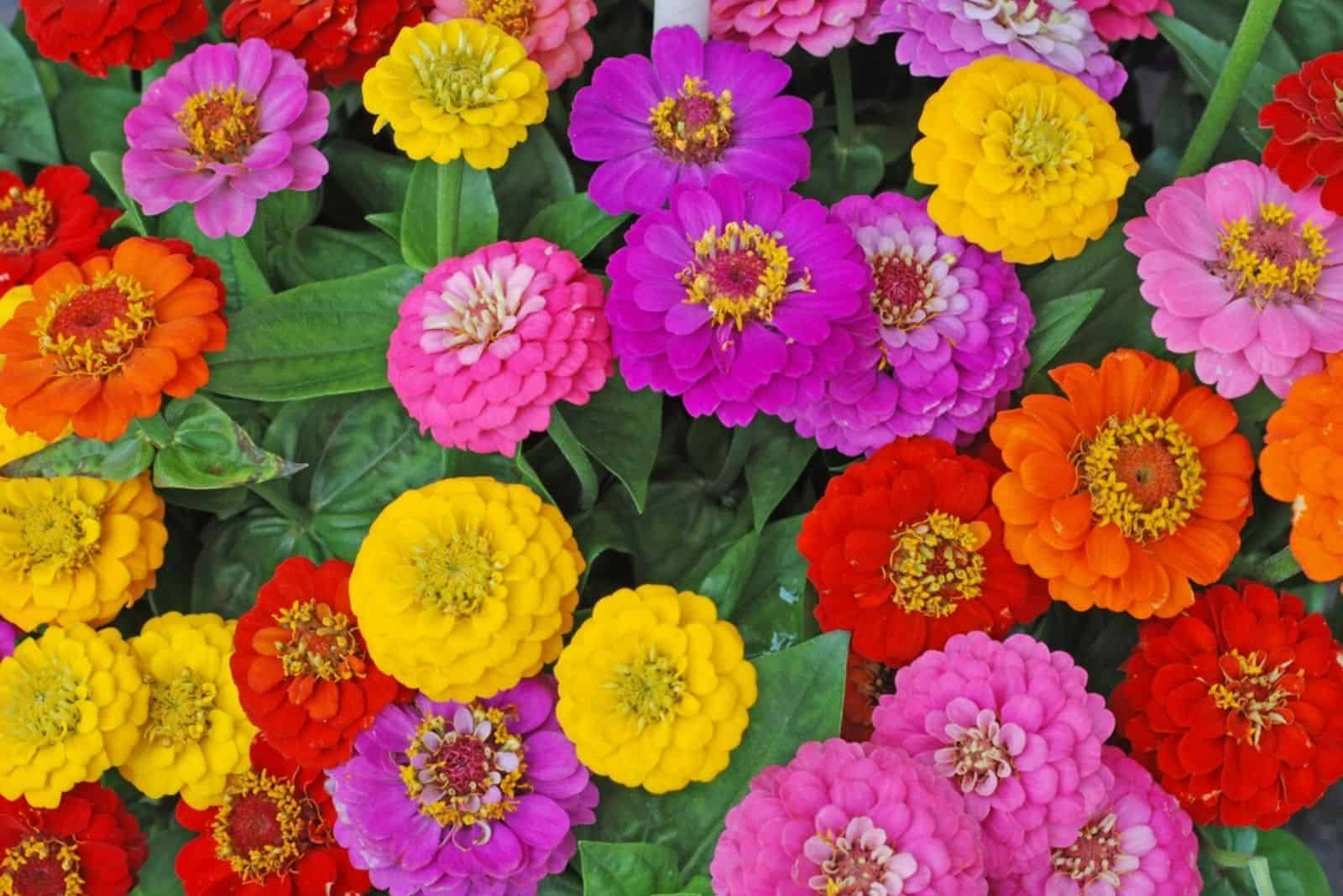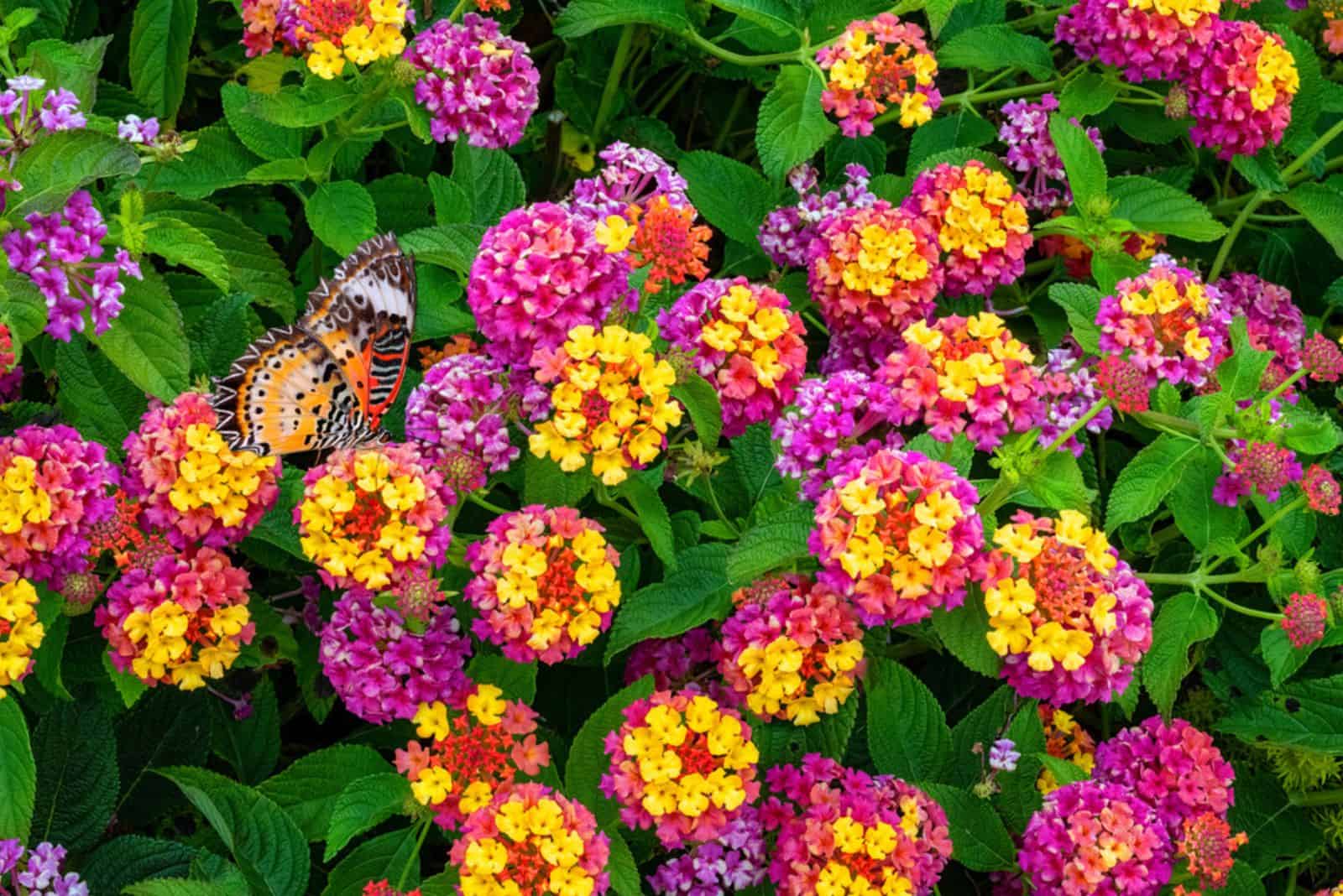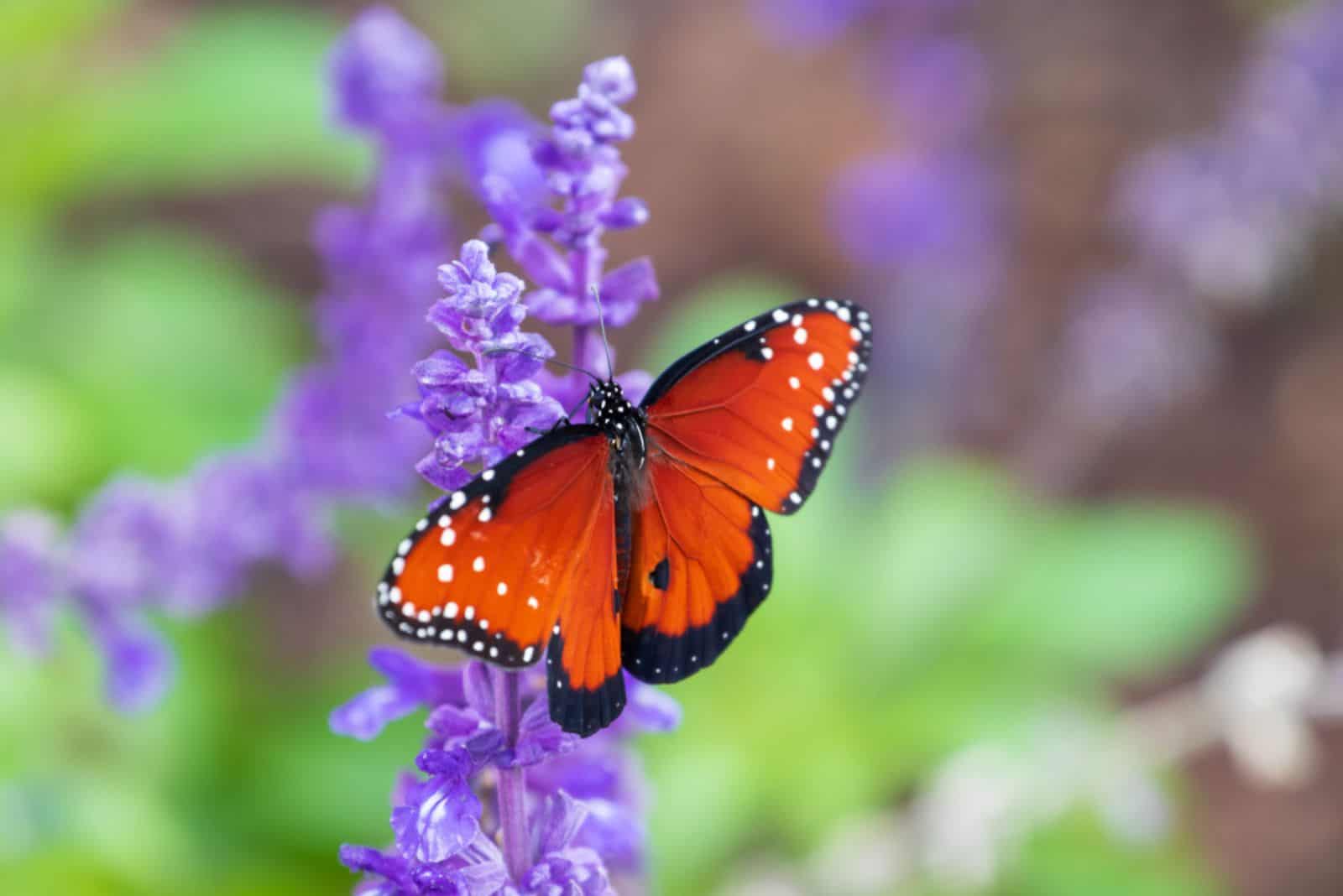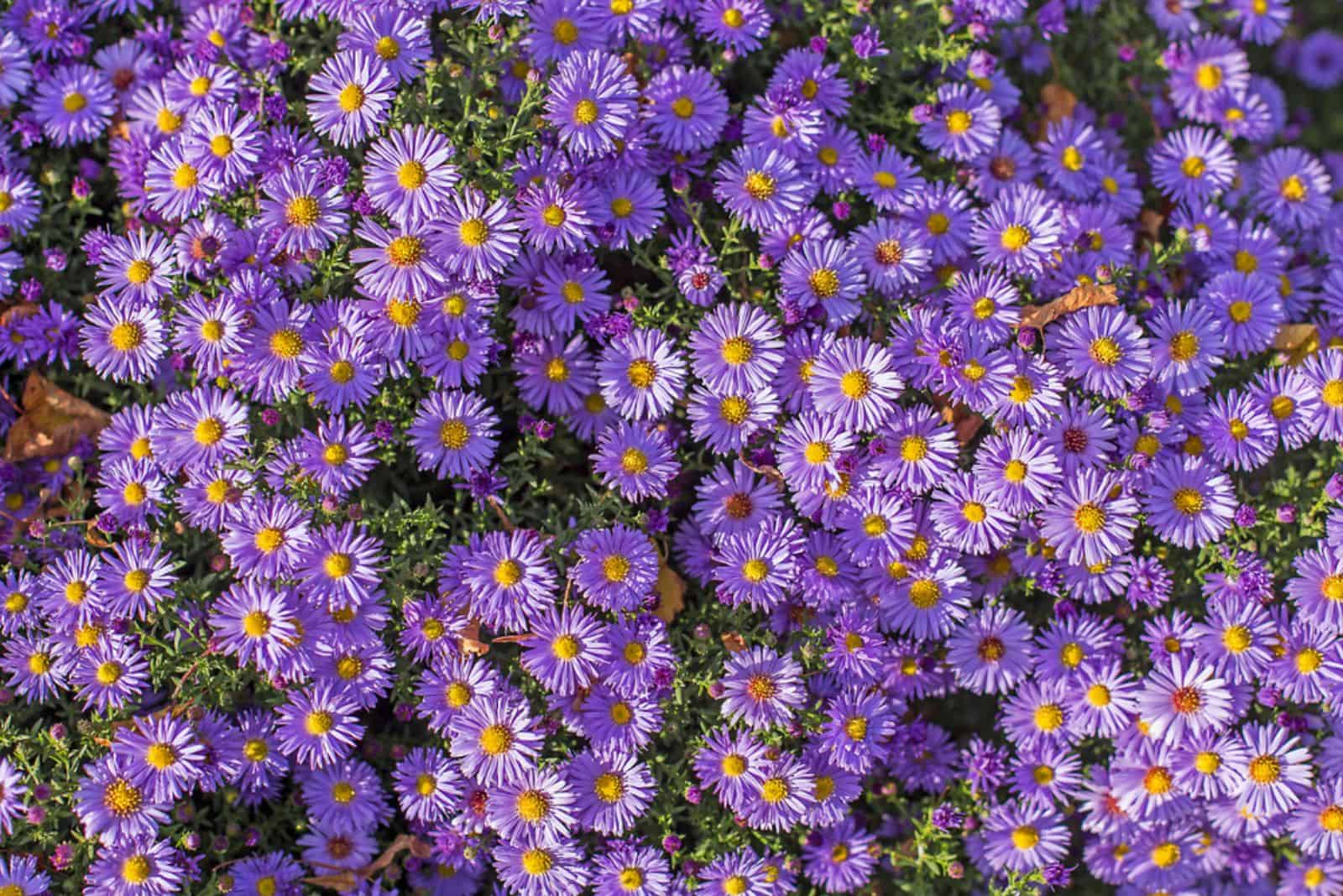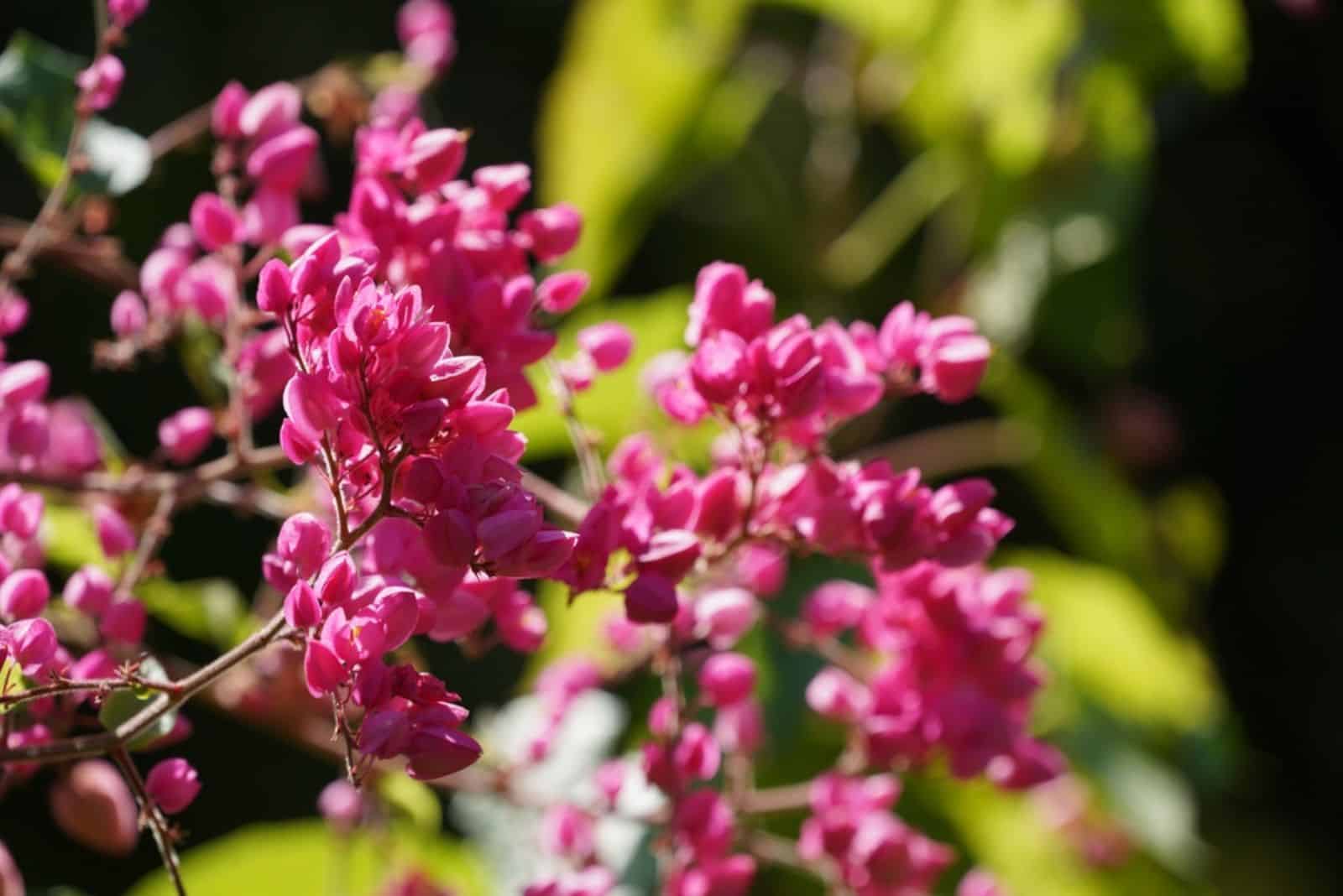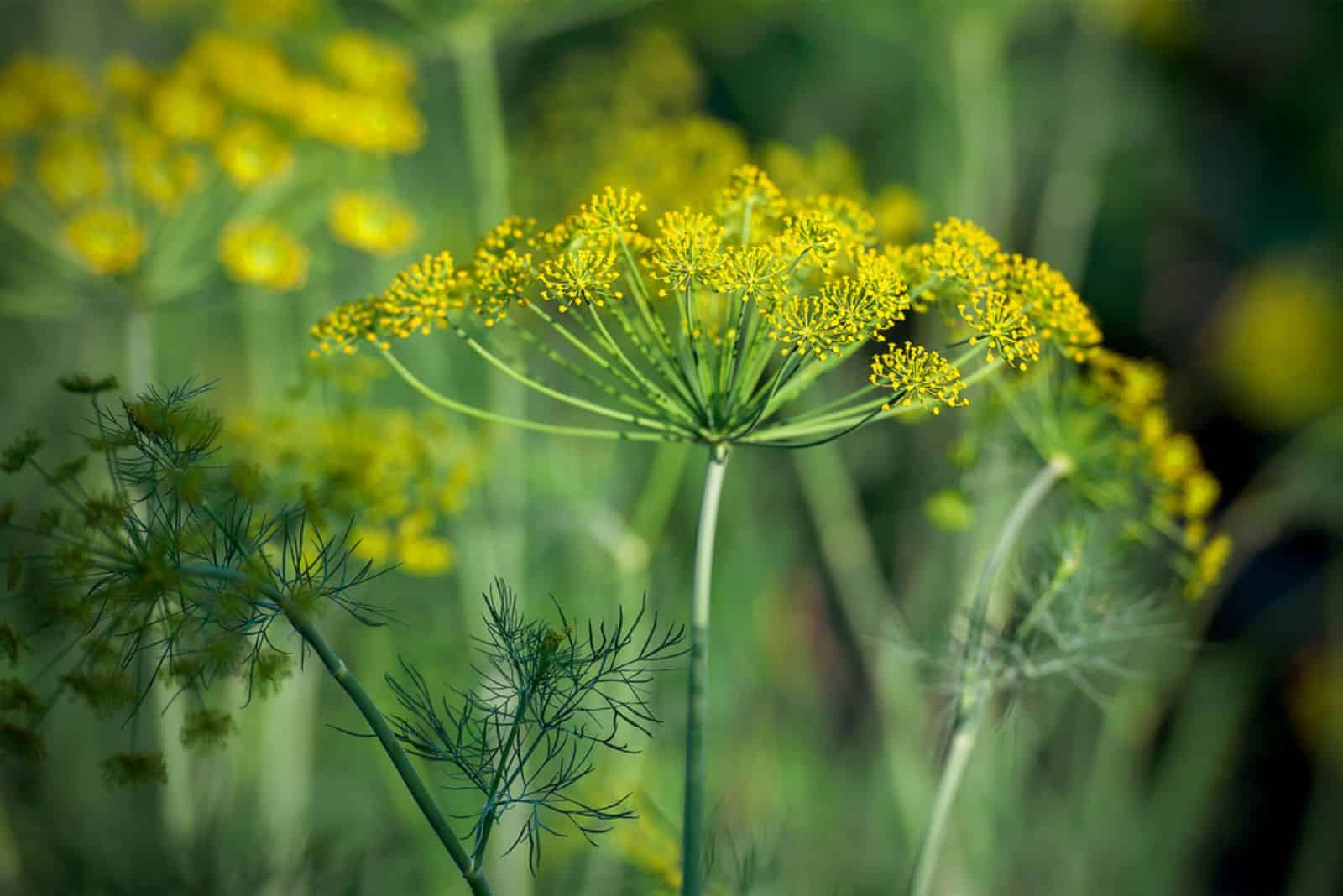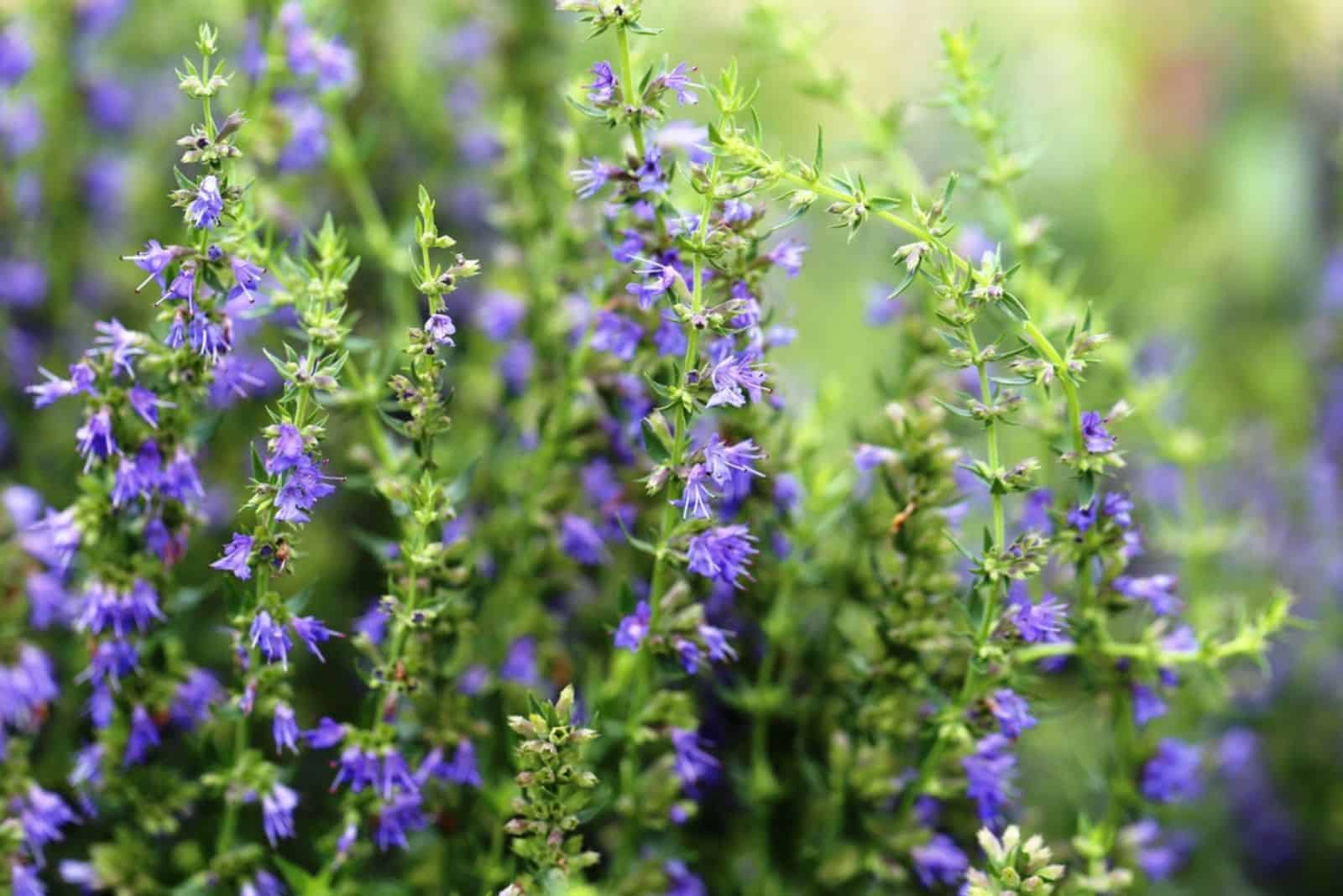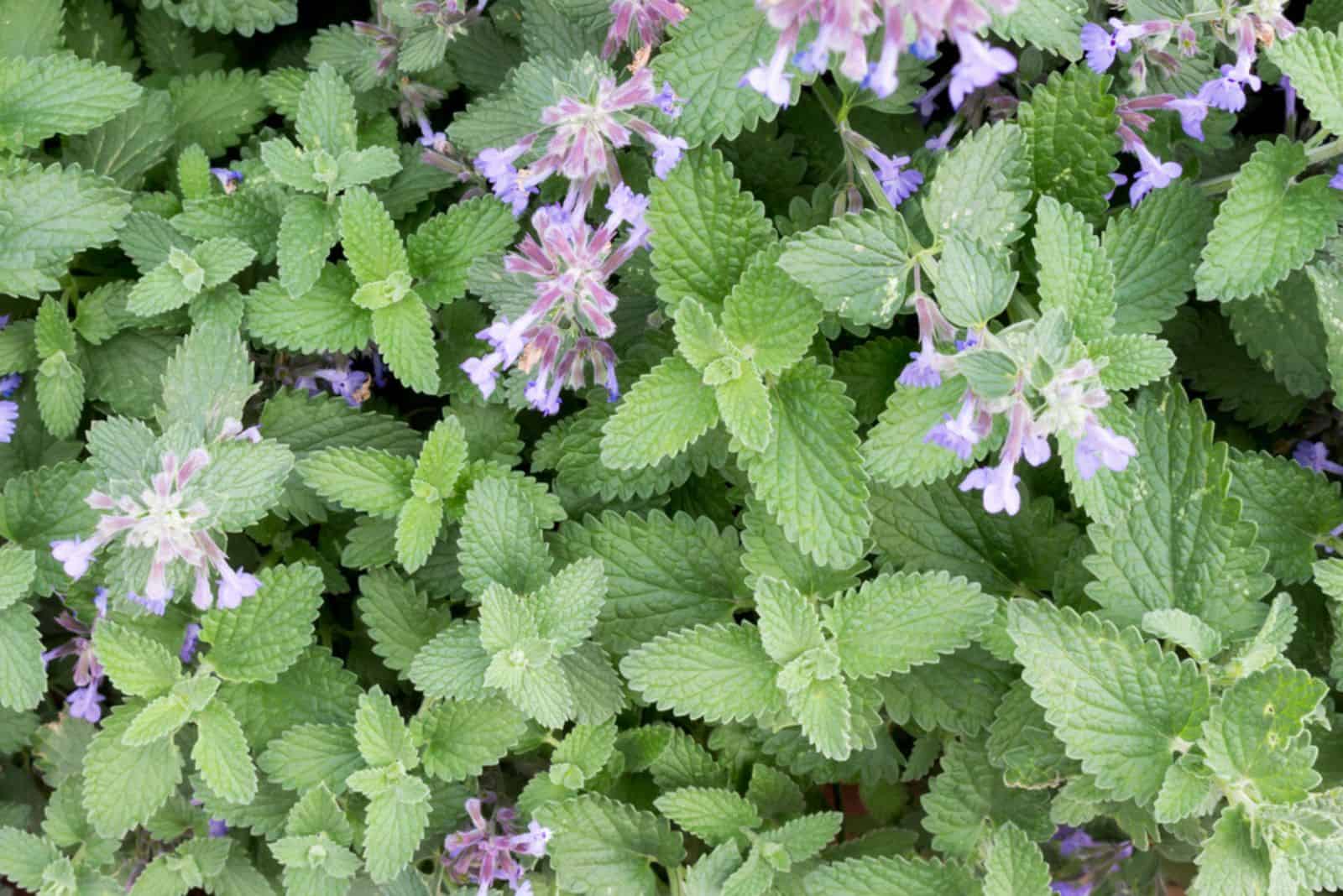Welcome to the world of butterfly gardening!
Creating a butterfly garden is not only a delightful and colorful addition to your outdoor space, but also a way to support these lovely creatures, especially because they are important pollinators.
With colorful butterflies flying from one flower to another, your garden will look like it came straight out of a fairy tale!
In this article, we will discuss creating an inviting habitat for these creatures by growing the plants they adore.
Let’s get started!
What Plants To Choose
Your enchanting butterfly garden begins with growing plants that attract butterflies – it’s as simple as that.
The trick is figuring out what plants attract a wide array of butterflies. Fortunately, there are plenty of herbs, shrubs, and flowers that most butterflies absolutely adore!
What’s also great is that these plants are easy to grow, resistant to deer and other critters, and can really spruce up your garden with their colorful and fragrant flowers.
However, you can go in a different direction and attract butterflies by installing a butterfly pool – it will provide moisture for the butterflies and also add interest to the garden.
By combining different types of plants and flowers that attract butterflies you can create an enchanting butterfly garden with either colorful or monochromatic designs, depending on your style).
The Ultimate Plant For Butterflies
We will start with the ultimate plant for attracting butterflies – the Butterfly bush, otherwise known as Buddleia or Summer lilac.
This plant literally has the word “butterfly” in its name, so it’s no surprise that it’s a must-have for every butterfly garden out there!
It’s a deciduous bush that produces nectar-rich flowers in every color you could imagine, including white, pink, purple, blue, yellow, orange, and red.
They start blooming from mid summer to early fall, serving as magnets for butterflies during this period.
They are relatively low-maintenance and can thrive in a wide range of growing conditions. These shrubs are hardy in zones 5 through 9. Sometimes they can become invasive, but there are sterile cultivars that won’t spread so quickly.
These plants thrive in full sun and well-draining soil, but they can tolerate partial shade and drought once established. They are fast-growing plants that can quickly reach a height of several feet.
Besides butterflies, these plants can also attract other pollinators like bees and hummingbirds. Butterfly bushes are truly valuable additions to any garden!
Annual Plants For Butterfly Gardens
There are plenty of annual plants that can attract these beautiful creatures into your garden, and they are relatively easy to plant and grow.
Most of them produce seed pods that can be saved for the next season, so you don’t have to buy new seeds every year.
Let’s meet them!
1. Zinnias
Zinnias are colorful and vibrant annuals that are known for their ability to attract pollinators. They produce flowers that come in a variety of colors, including orange, red, yellow, purple, and pink.
Because zinnias are plants with shallow roots, you can grow them in containers or alongside other flowers without worrying about them smothering nearby plants.
This annual can be grown in USDA hardiness zones 3 to 10 as long as it has full sun, fertile soil, good drainage, and an abundance of organic matter.
2. Marigolds
One of the main reasons to plant marigolds in your garden, besides their alluring yellow color, is their ability to attract butterflies!
Butterflies are drawn to these bright orange and yellow flowers that are rich in nectar. Their flat flower heads also make it easier for butterflies to feed on the nectar!
Marigolds are sun-loving plants that can grow in full sun and partial shade. They thrive in well-draining soil, but are relatively drought tolerant once established and can adapt to various types of soil.
These plants are perfect for beginner gardeners!
3. Lantana
Here is yet another plant that produces colorful and vibrant flower clusters. Although Lantanas might be perennial in zones 9 through 10, they are often grown as an annual in zones 1 through 8.
They produce an abundance of nectar-rich flowers that attract hummingbirds and butterflies. Butterflies are particularly attracted to these bright and fragrant flowers, making it a must-have plant for butterfly gardens.
Lantanas thrive in full sun and prefer well-draining soil. They can tolerate a wide range of soil conditions and are relatively tolerant to drought. It’s also a plant that will survive the summer heat due to its remarkable heat tolerance.
Perennial Plants For Butterfly Gardens
Perennials that attract pollinators often have gorgeous flowers that can create beautiful scenery in your butterfly garden.
Most of these plants are very easy to grow, so they’re ideal if you are a beginner!
4. Salvia
Salvia, otherwise known as sage, is a hardy plant that’s known for its beautiful spikes of flowers and ability to attract butterflies and hummingbirds.
They have tubular-shaped flowers that are especially appealing to butterfly varieties such as skippers and swallowtails.
These plants grow well in full sun. They also prefer soil that drains well. Once established, these plants don’t require much watering. Overwatering can lead to big problems with salvias, which usually end up rotting as a result.
5. Purple Coneflower
The eastern purple coneflower, also known as Echinacea purpurea, is a small perennial that normally grows to a height between ½ a foot and 2 feet.
They produce striking, daisy-like flowers that not only add beauty to the garden but also provide a valuable food source for butterflies.
Butterfly varieties such as monarchs and painted ladies are particularly fond of coneflower nectar, which their cone-shaped centers are filled with!
Although the plant is known as the purple coneflower, occasionally the blossoms can be pink or even white.
It can flourish in different types of soil, including clay, rocky, or sandy mediums, as long as they have proper drainage. It’s hardy in USDA hardiness zones 4 through 9 and needs at least 6 to 8 hours of light per day
6. Aster
Asters are beautiful perennial plants that produce masses of small, daisy-like flowers. These nectar-rich flowers come in a variety of colors, including white, pink, purple, and blue. They start blooming in late summer or early fall.
Because of this, they are considered a late-season nectar source and attract butterflies as they prepare for migration or hibernation. The abundance of small, open flowers on asters provides a plentiful supply of nectar for butterflies to feed on!
Asters grow and thrive in USDA hardiness zones 3 through 8. They can tolerate full sun and partial shade. Other than well-draining soil, asters don’t have any special preferences.
These plants can even withstand heat and drought once established.
7. Milkweed
Milkweed, otherwise known as butterfly weed, is a vital plant for supporting butterfly populations, particularly the Monarch butterfly.
These insects lay their eggs on the leaves or flower heads of this plant, and the eggs develop into caterpillars which then turn into lovely butterflies.
Numerous tiny blooms make up the flower head, which can be white, pink, purple, yellow, orange, red, or green.
Milkweed is a perennial plant that blooms from June to August and grows in zones 4 through 9. It prefers growing in full sun exposure. The majority of cultivars grow in soil with a pH range of 4.8 to 6.8.
Milkweed can also become invasive, so plant it where you can better control it or get a special garden bed for it.
8. Coral Bells
Coral bells are shade-loving perennials that produce vibrant foliage and bell-shaped flowers. They can add color and texture to your garden, and attract numerous butterflies and pollinators.
In addition to their colorful flowers, the dense foliage also offers shelter and resting spots for butterflies in between feedings.
Coral Bells prefer growing in partial shade to full shade, although some varieties can tolerate sun exposure. They require well-draining soil and regular watering to maintain soil moisture.
These plants are known for their adaptability to various soil types and their ability to withstand heat and humidity.
Herbs That Attract Butterflies
Herb gardens and butterfly gardens aren’t so different – they are both filled with colorful and fragrant flowers that attract numerous pollinators.
Not only are these easy-to-grow herbs useful for attracting butterflies, but they can also be used for culinary purposes. So, if you want to add some spices to your meals, consider planting herbs in your butterfly garden.
9. Fennel
This is a perennial herb plant that produces yellow flowers and feathery foliage.
These flowers are abundant in nectar, which is why they attract butterflies, especially swallowtail varieties. The feathery foliage also offers shelter and a place for butterfly larvae to feed.
Fennel is an easy to grow herb that thrives in full sun and well-draining soil. Once established, they are drought and heat tolerant. Fennel is also used for culinary purposes.
10. Lavender
Lavender is a popular perennial herb known for its fragrant flowers and soothing properties. This medicinal herb is often used for healing and relaxing, but it can also be used to attract butterflies.
Lavender’s fragrant flower spikes are rich in nectar that butterflies absolutely adore. They also have a long blooming period, which makes them even more alluring!
These herbs thrive in full sun and soil that drains well. They grow better in dry conditions and are resistant to heat and drought, which is why folks often try to make a lavender hedge.
11. Hyssop
Here is yet another herb with mesmerizing flowers that act as magnets for bees and butterflies!
Their tubular flowers come in different colors, including blue, purple, and pink. With their strong fragrance, hyssop can attract pollinators and repel pests like cabbage moths at the same time.
It is hardy in zones 4 through 9. This herb prefers full sun and well-draining soil that’s also rich in nutrients. It requires regular watering during dry periods.
12. Yarrow
Yarrow is a hardy perennial plant that produces clusters of tiny flowers ranging between white, pink, yellow, orange, and red (depending on the cultivar). Their delicate blooms and fern-like foliage makes them a favorite among gardeners and butterflies!
Yarrow’s flat-topped flower clusters are rich in nectar, which is why they attract a wide range of butterfly species, including swallowtails, painted ladies, and hairstreaks.
Yarrow can flourish in a variety of soil types, but favors those that drain well, and is hardy in USDA zones 3 through 9. Don’t grow them with zucchinis or cucumbers as these veggies are not the best yarrow companion plants.
It requires a location where it can receive at least 6 hours of sunlight a day in order to produce blooms. Once established, yarrow requires minimal watering.
13. Catnip
This herb produces fragrant foliage and delicate flowers that not only create beautiful scenery in the garden, but also attract various pollinators.
Additionally, they have a long blooming period, so they provide visiting butterflies with a steady supply of nectar.
Nepeta, otherwise known as catnip, is a herb that cats absolutely adore. However, cats are not the only ones attracted to this plant – butterflies are also mesmerized by catnip!
The compact clusters of flowers provide a convenient landing space for butterflies, while the aromatic foliage adds to the plant’s overall appeal.
Catnip is relatively easy to grow. It prefers full sun but can tolerate partial shade, and requires soil that’s well draining. Once established, they can withstand long periods without water.
I hope this article was helpful.
Until next time!

